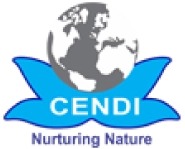2018 VIETNAM
Community Implementation of Mixed Species Restoration for Livelihoods and Ecological Function
Community Entrepreneur Development Institute (CENDI)
Research activities
Landscape
Overview
The project site is located in Lien Trach commune, Bo Trach district, Quang Binh province with a total of land area 2,781 hectares. Road access is difficult and other facilities and infrastructure are limited. Most people in this area are farmers. In recent years, mono-culture and plantations have become dominant and cover about 70%-85% of the total area, focusing on acacia, pine and eucalyptus. Only a small proportion of natural forest remains. However, the vulnerability of mono-plantations was revealed when the area was hit by strong typhoons in 2013 and 2017 and one in December 2018 which destroyed large area of mono-plantations. In addition, acacia and eucalyptus plantations have caused a serious water shortage. Therefore, the area has become socially and environmentally vulnerable, lowering the quality of ecosystem services and excluding certain people. Hence, a pilot project with evidence-based farming models targeting young farmers is considered highly beneficial for rural communities.
This project aims to provide proper knowledge, raise public awareness and advocate policies needed to achieve long-term livelihood security through the restoration of integrated farming combined with diverse tree species and animal husbandry. The project especially targets a group of young farmers who are expected to play a role as change agents.
The following activities were conducted:
1. A series of community workshops on mixed species restoration;
2. Support for sourcing of local tree varieties and animals’ varieties for model farms; and
3. Documenting the lessons learned from the projects to share with others who are interested and help out local policy.
As a result, five community workshops were organised for 84 participants in total. Three model farms were established. Lessons from this project were documented on a website (https://mixed-species-planting.org/home-page) which also provides a hub to connect farmers from/outside the projects. Overall, awareness on restoration of local indigenous species has been cultivated across the regions.
Key achievements
Awareness on restoration of local indigenous species has been cultivated across the regions through the following actions:
- Knowledge and awareness about the need for integrated farming increased among farmers, especially the youth at the project sites.
- Model farms were established, attracting a number of farmers within and outside the project sites and providing opportunities to learn farming techniques.
- Not only model farmers but also other farmers started integrated farming with mixed species.
- A platform to share knowledge from the project was established through development of a website.
Lessons
- Although it is challenging to make concrete changes visible on the ground and benefiting local communities, the willingness to share difficulties and experiences openly is very important and can lead to success for farm-holders, for the youths, for a project implementer and for joint collaboration.
- Since farming involves a number of unexpected issues (e.g. African Swine Fever) or failures, it is necessary to embrace lessons learned from them, be willing to listen to farmers’ personal experiences and encourage them to overcome the hardships with close engagement.
Project location
Organisation

Community Entrepreneur Development Institute (CENDI)
- Sector
- Non-governmental organisation
- Country
- Vietnam
- Website/SNS
- http://cendiglobal.org/
Relevant projects
Projects of the same year
Aichi Biodiversity Targets
Aichi Biodiversity Targets
-
Awareness increased
-
Habitat loss halved or reduced
-
Genetic diversity maintained
Sustainable Development Goals
Sustainable Development Goals
-
No poverty
-
Zero hunger
-
Good health and well-being
-
Decent work and economic growth
-
Partnerships for the goals


